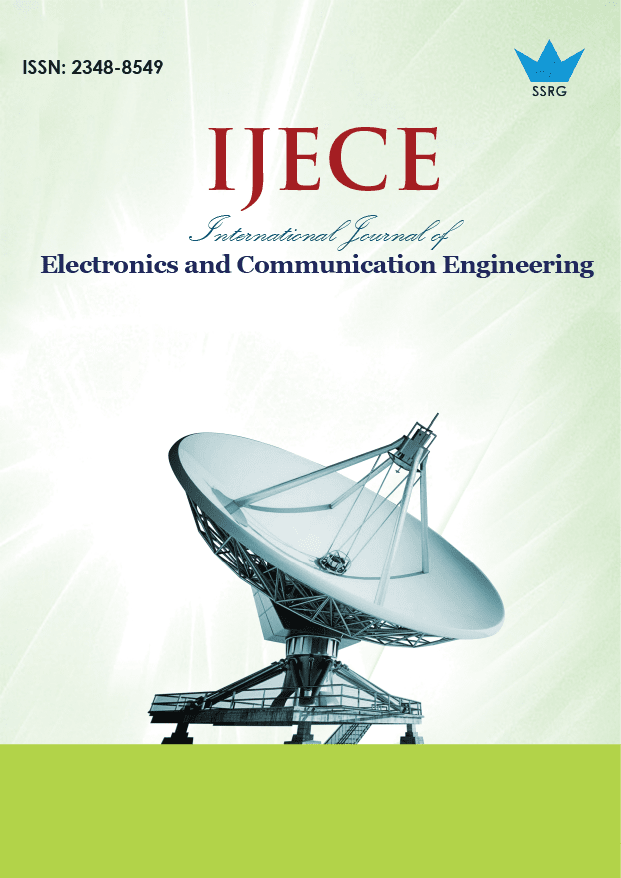Cutting-Edge Image Processing of Lower Gastrointestinal Track Using Deep Learning

| International Journal of Electronics and Communication Engineering |
| © 2025 by SSRG - IJECE Journal |
| Volume 12 Issue 4 |
| Year of Publication : 2025 |
| Authors : S. Vasudevan, Vediyappan Govindan, Haewon Byeon |
How to Cite?
S. Vasudevan, Vediyappan Govindan, Haewon Byeon, "Cutting-Edge Image Processing of Lower Gastrointestinal Track Using Deep Learning," SSRG International Journal of Electronics and Communication Engineering, vol. 12, no. 4, pp. 132-141, 2025. Crossref, https://doi.org/10.14445/23488549/IJECE-V12I4P112
Abstract:
Lower Gastrointestinal (GI) problems rely heavily on medical imaging for diagnosis and therapy. The Kvasir dataset is useful for medical imaging research, particularly in gastroenterology. The dataset comprises high-quality movies and pictures captured during endoscopic operations, which depict the gastrointestinal tract, including the stomach, duodenum, colon, and oesophagus. The data was collected through Kaggle. The frequent susceptibility of these pictures to noise and distortions may hinder accurate analysis. In this article, we report a new method using sophisticated mathematical analysis to improve and brighten pictures of the Lower Gastrointestinal (GI) tract, such as pylorus, normal-cecum, and ulcerative colitis images. Our goal was to enhance the picture quality through the use of various statistical filters, Gaussian functions, the Fast Fourier Transform (FFT), and the Inverse Fast Fourier Transform (IFFT). This would enable more precise classification and detection. According to our investigation, adaptive mean filtering plus Gaussian correction performed noticeably better than conventional bi-cubic filtering. On the other hand, the bi-cubic filter had a PSNR of 42.06 and an MSE of 4.04. The combined filter technique, on the other hand, had a PSNR of 49.44 and an MSE of 0.73. The results show that using both the adaptive mean filter and the Gaussian correction approach together is the best way to improve images for lower GI tract exams. This makes the images clearer and more detailed. Additionally, the combined filter’s improved image processing makes lower GI structures easier to see and understand, which helps doctors diagnose patients and plan treatments. Overall, our results highlight the value of using sophisticated filter approaches to improve image processing in lower gastrointestinal imaging, with the combined filter showing itself to be the best option for raising diagnostic precision and picture quality.
Keywords:
Computer Vision, Deep Learning, Image Analysis, Partial Differential Equation, Python.
References:
[1] Peng Si et al., “Feature Context Aggregation Network with Edge Enhance for Endoscopic Gastrointestinal Bleeding Images Segmentation,” IEEE 10th Data Driven Control and Learning Systems Conference, Suzhou, China, pp. 77-81, 2021.
[CrossRef] [Google Scholar] [Publisher Link]
[2] T.K. Kho, K.S. Sim, and F.F. Ting, “Gastrointestinal Endoscopy Colour-Based Image Processing Technique for Bleeding, Lesion and Reflux,” International Conference on Robotics, Automation and Sciences, Melaka, Malaysia, pp. 1-4, 2016.
[CrossRef] [Google Scholar] [Publisher Link]
[3] Yassine Oukdach et al., “ConV-ViT: Feature Fusion-Based Detection of Gastrointestinal Abnormalities Using CNN and ViT in WCE Images,” 10th International Conference on Wireless Networks and Mobile Communications, Istanbul, Turkiye, pp. 1-6, 2023.
[CrossRef] [Google Scholar] [Publisher Link]
[4] Dev Gupta et al., “Classification of Endoscopic Images and Identification of Gastrointestinal Diseases,” International Conference on Machine Learning, Big Data, Cloud and Parallel Computing, Faridabad, India, pp. 231-235, 2022.
[CrossRef] [Google Scholar] [Publisher Link]
[5] Zhenwei Miao, and Xudong Jiang, “Further Properties and a Fast Realization of the Iterative Truncated Arithmetic Mean Filter,” IEEE Transactions on Circuits and Systems II: Express Briefs, vol. 59, no. 11, pp. 810-814, 2012.
[CrossRef] [Google Scholar] [Publisher Link]
[6] Qing Lyu et al., “Cine Cardiac MRI Motion Artifact Reduction Using a Recurrent Neural Network,” IEEE Transactions on Medical Imaging, vol. 40, no. 8, pp. 2170-2181, 2021.
[CrossRef] [Google Scholar] [Publisher Link]
[7] M.Z.F. Amara, R. Bandara, and Thushari Silva, “SLIC Based Digital Image Enlargement,” 18th International Conference on Advances in ICT for Emerging Regions, Colombo, Sri Lanka, pp. 1-6, 2018.
[CrossRef] [Google Scholar] [Publisher Link]
[8] Fathi Kallel, and Ahmed Ben Hamida, “A New Adaptive Gamma Correction Based Algorithm Using DWT-SVD for Non-Contrast CT Image Enhancement,” IEEE Transactions on NanoBioscience, vol. 16, no. 8, pp. 666-675, 2017.
[CrossRef] [Google Scholar] [Publisher Link]
[9] Sijin Li et al., “Color Bleeding Reduction in Images and Video Compression,” Proceedings of 2011 International Conference on Computer Science and Network Technology, Harbin, China, 2011.
[CrossRef] [Google Scholar] [Publisher Link]
[10] Ningxiong Mao et al., “Reversible Data Hiding of JPEG Image Based on Adaptive Frequency Band Length,” IEEE Transactions on Circuits and Systems for Video Technology, vol. 33, no. 12, pp. 7212-7223, 2023.
[CrossRef] [Google Scholar] [Publisher Link]
[11] Shekhar S. Chandra et al., “Robust Digital Image Reconstruction via the Discrete Fourier Slice Theorem,” IEEE Signal Processing Letters, vol. 21, no. 6, pp. 682-686, 2014.
[CrossRef] [Google Scholar] [Publisher Link]
[12] Paul D. Laforge, Raafat R. Mansour, and Ming Yu, “The Use of Low-Pass Filters as Impedance Inverters for Highly Miniaturized Superconducting Bandstop Filter Designs,” IEEE Transactions on Applied Superconductivity, vol. 21, no. 3, pp. 575-578, 2011.
[CrossRef] [Google Scholar] [Publisher Link]
[13] Ángel Chavarín et al., “Contrast Enhancement in Images by Homomorphic Filtering and Cluster-Chaotic Optimization,” IEEE Access, vol. 11, pp. 73803-73822, 2023.
[CrossRef] [Google Scholar] [Publisher Link]
[14] Hsing-Yen Tsai et al., “3-D Wireless Power Transfer With Noise Cancellation Technique for −62-dB Noise Suppression and 90.1% Efficiency,” IEEE Solid-State Circuits Letters, vol. 6, pp. 213-216, 2023.
[CrossRef] [Google Scholar] [Publisher Link]
[15] Ahmed H. Abdel-Gawad, Lobna A. Said, and Ahmed G. Radwan, “Optimized Edge Detection Technique for Brain Tumor Detection in MR Images,” IEEE Access, vol. 8, pp. 136243-136259, 2020.
[CrossRef] [Google Scholar] [Publisher Link]
[16] G.J. Grevera, J.K. Udupa, and Y. Miki, “A Task-Specific Evaluation of Three-Dimensional Image Interpolation Techniques,” IEEE Transactions on Medical Imaging, vol. 18, no. 2, pp. 137-143, 1999.
[CrossRef] [Google Scholar] [Publisher Link]

 10.14445/23488549/IJECE-V12I4P112
10.14445/23488549/IJECE-V12I4P112